Top 7 Outdoor Hanging Garden Plants
Avoid a dull and lifeless patio or outdoor living space. Knowing which outside hanging plants to use around your patio will help you create a warm, beautiful hanging garden with incredible flowers and an abundance of birds and pollinators to watch and enjoy.
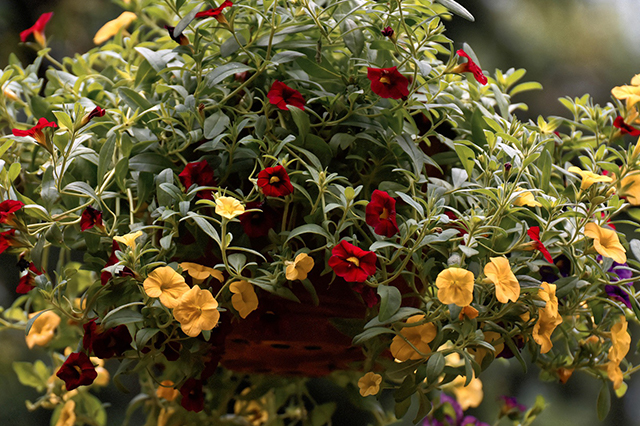
gardeninginfo-online.com gathered species, flowering, planting, and growing information on 7 of the best outdoor hanging garden plants.
1. Begonia (Begonia)
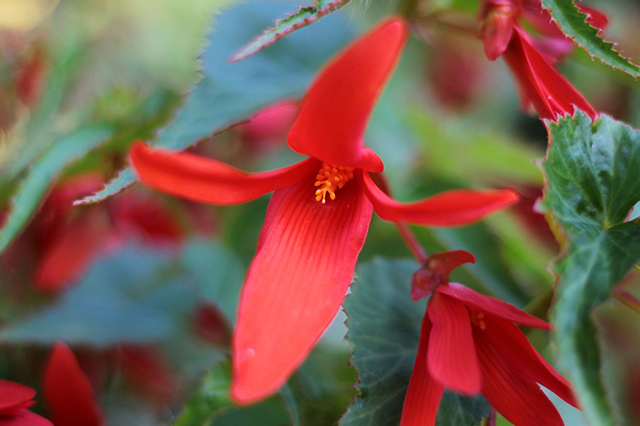
Begonias are attractive perennial herbs with soft, succulent stems and white, pink, red, orange, or yellow flowers.
Flower – Begonias can be found blooming from early summer until the first frost. Some varieties will bloom all year.
Soil Requirements – This species grows best in light, fertile, well-drained soil
Sun Preference – Begonias flourish in part shade (4 to 6 hours of morning sunlight)
Water Needs – Water every two to four days and more frequently when grown in full sun
Hardiness Zone – 2 through 10 (when grown in colder zones 2 through 8, they should be overwintered indoors)
2. Petunia (Petunia)
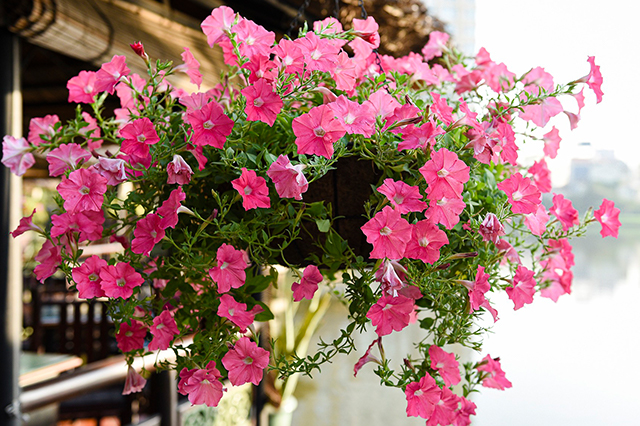
Petunias are annual flowers that have captivated gardeners with their funnel-shaped flowers with crisped, curled, waved, and doubled variations. The flower’s colors appear from pink to red, lavender, purple, peach, white, cream, and yellow.
Flower – Some petunia varieties grow with a pendulous, cascading habit that makes them more suitable for hanging gardens and window boxes.
Soil Requirements – This species grows best in light, fertile, well-drained soil
Sun Preference – Petunias perform best when located in full sun all day.
Water Needs – A thorough watering once a week is sufficient for this plant species
Hardiness Zone – 2 through 11 (when grown in colder zones 2 through 8, they should be overwintered indoors)
3. Geranium (Pelargonium)
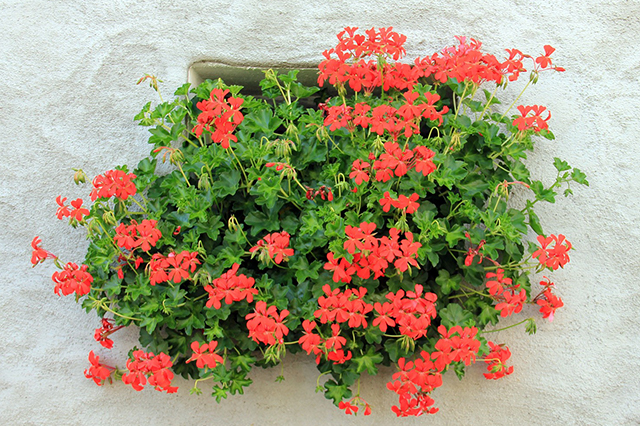
These plants thrive in bright, sunny climates and tolerate moderate to regular watering when planted in well-draining soil. Geraniums are relatively low-maintenance plants and excellent choices for container or hanging gardens.
Flower – Geraniums are abundant bloomers whose bright flowers will blossom from spring until fall.
Soil Requirements – The ideal soil for geraniums is loose with plenty of organic matter
Sun Preference – Most geraniums need a location in full sun (6 to 8 hours)
Water Needs – Check soil weekly and water when the top inch is dry
Hardiness Zone – 3 through 9
4. Strawberry (Fragaria × ananassa)
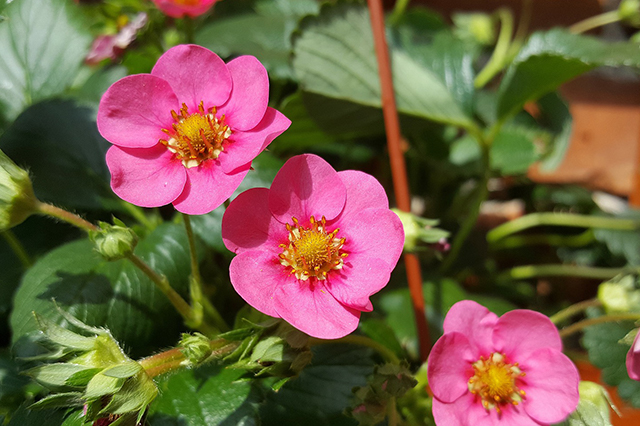
Strawberries are low-growing herbaceous flowering and fruiting plants with a fibrous root system and a crown from which arise basal leaves. The leaves are compound with three leaflets, sawtooth-edged, and usually hairy.
Flower – Strawberry plants usually begin flowering in late spring, and it takes about four weeks from flowering to ripened fruit.
Soil Requirements – Strawberries grow best in a deep, sandy loam soil rich in organic matter
Sun Preference – Ten or more hours of daily sunlight is ideal, but this species needs six hours minimum of direct daily sunlight
Water Needs – Strawberries require water equivalent to 1 to 1.5 inches of rain per week
Hardiness Zone – Strawberries can be grown as perennials in zones 5 through 8 or as cool-season annuals in zones 9 through 10
5. Spider Plant (Chlorophytum comosum)
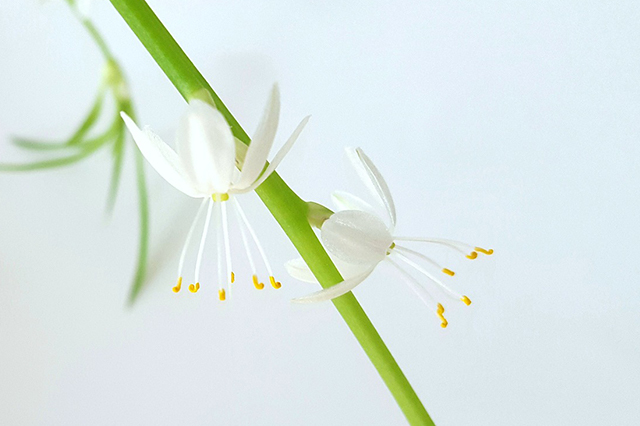
The spider plant is among the easiest plants to grow. When grown indoors, it is highly effective in removing harmful chemicals from the air, like carbon monoxide, xylene, formaldehyde, and toluene.
Flower – Spider plants occasionally develop small white flowers at the ends of long arching stems. Often times these flowers are short-lived and inconspicuous.
Soil Requirements – The ideal spider plant soil is loamy, moist, and well-drained
Sun Preference – Spider plants are a low-light species and grow best with 3 to 4 hours of indirect daily sunlight
Water Needs – Water spider plants about once a week
Hardiness Zone – 9 through 11
6. Lobelia (Lobelia erinus)

This showy perennial is typically unbranched but may exhibit slight branching. The erect, 2 to 3-foot stems produce lavender-blue, tubular flowers crowded together on the stem’s upper end. Showy, bright blue, purple, rose, or white flowers are in the axils of leafy bracts and form an elongated cluster.
Flower – Lobelia blooms prolifically for months, with a trailing, spreading, or bushy habit ideal for containers and hanging gardens.
Soil Requirements – This species thrives in a good, fertile, reliably moist soil
Sun Preference – Lobelia performs best in full sun to partial shade (4 to 6 hours of daily sunlight)
Water Needs – Once established, this plant is drought-tolerant and requires watering twice a week during dry periods
Hardiness Zone – 2 through 10
7. Verbena (Verbena)
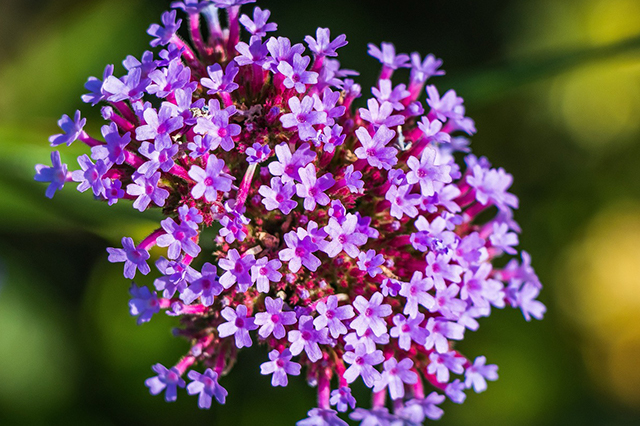
Verbena (also known as vervain or verveine) is an herbaceous flowering plant. It may be either annual or perennial, depending on the species you choose to grow.
Flower – This species blooms all season long. Verbena looks just as beautiful weaving through garden beds as it does spilling from pots, window boxes, and hanging baskets.
Soil Requirements – Verbena thrives in soil amended with compost but can adapt to many soil types as long as there is good drainage
Sun Preference – Verbenas require a location that receives full sun throughout the day
Water Needs – This species thrives with approximately one inch of water once per week
Hardiness Zone – 7 through 11
Hanging Garden Plants
In this article, you discovered essential species, planting, growing, and flowering information for 7 easy-to-grow outdoor hanging garden plants.
Knowing which outdoor hanging garden plants to grow around your outdoor living area will help you create a beautiful, cozy, and inviting space that benefits pollinators, birds, your guests, and your loved ones.
Not knowing the best hanging garden plants will leave your outdoor spaces barren and less colorful than possible.
Sources:
hgic.clemson.edu/factsheet/begonia/
extension.umn.edu/flowers/growing-petunias
gardeningsolutions.ifas.ufl.edu/plants/ornamentals/geraniums.html
extension.umd.edu/resource/growing-strawberries-home-garden
hort.extension.wisc.edu/articles/spider-plant-chlorophytum-comosum/
gardening.cornell.edu/homegardening/scene3417.html
aggie-horticulture.tamu.edu/archives/parsons/96promotions/verbena.html